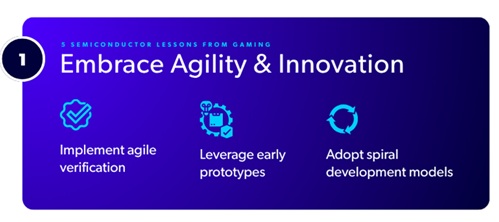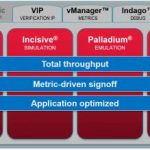You may not know this, but on-time delivery at expected performance with 5G is being determined right now in engineering labs across the globe. This is true even though end user deployments won’t be for another three to four years. You see, the ground is being laid right now with manufacturers, operators and standards bodies. With… Read More
 TSMC Kumamoto: Pioneering Japan's Semiconductor RevivalIn the lush landscapes of Kumamoto Prefecture, on…Read More
TSMC Kumamoto: Pioneering Japan's Semiconductor RevivalIn the lush landscapes of Kumamoto Prefecture, on…Read More Memory Matters: The State of Embedded NVM (eNVM) 2025Make a difference and take this short survey.…Read More
Memory Matters: The State of Embedded NVM (eNVM) 2025Make a difference and take this short survey.…Read More 5 Lessons the Semiconductor Industry Can Learn from GamingBy Kamal Khan The semiconductor world has always…Read More
5 Lessons the Semiconductor Industry Can Learn from GamingBy Kamal Khan The semiconductor world has always…Read More A Compelling Differentiator in OEM Product DesignJennifer, an OEM hardware designer, is planning a…Read More
A Compelling Differentiator in OEM Product DesignJennifer, an OEM hardware designer, is planning a…Read MoreMore Details on the Smartphone and Wearables Market
The Linley Mobile Conference opened today with a nice keynote overview of the mobile market evolution. In the media I see a lot of doom and gloom articles about smartphones and wearables but if you look at it closely you will see a natural growth curve evolving.
The mobile semiconductor market is evolving as vendors split their focus… Read More
The Appeal of a Multi-Purpose DSP
When you think of a DSP IP, you tend to think of very targeted applications – for baseband signal processing or audio or vision perhaps. Whatever the application, sometimes you want a solution optimally tuned to that need: best possible performance and power in the smallest possible footprint. These needs will continue,… Read More
SMART sensors with OTP memory for the IIoT
A few years back before IoT became the buzzword, the industrial automation community had already talking about “smart sensors” since the mid-1990s. The impetus for those discussions was IEEE 1451, a family of standards for adding intelligence and wireless communications to sensors so they could be incorporated into field networks.… Read More
Coming Up Next: ARM IoT ASICs!
The History of ASICs is well documented in our book “Fabless: The Transformation of the Semiconductor Industry” which illustrates the earliest forms of design start driven collaboration. The history of ARM is well documented in our book “Mobile Unleashed” which illustrates an entire company culture based on design start driven… Read More
Formally Crossing the Chasm
Formal verification for hardware was stuck for a long time with a reputation of being interesting but difficult to use and consequently limited to niche applications. Jasper worked hard to change this, particularly with their apps for JasperGold and I have been seeing more anecdotal information that mainstream adoption is growing.… Read More
Car Theft Making a Comeback
In the U.K., where vehicle theft has been in a steep decline for the past 20 years, the most widespread advice given by police to car owners is: keep your car keys in your freezer. The most common source of vulnerability these days is the interception of RF signals between keyfobs and cars. For a time, several years ago, there was a rash… Read More
After the fatal Tesla crash, I still feel safe in my self-driving car
At first, the thought of letting my car drive itself seemed rather frightening. But the highway was almost empty and the lanes were clearly marked, so I took the risk and engaged the autopilot function in my new Tesla Model X. Yet I couldn’t let go of the steering wheel. I didn’t want to put my life in the hands of software. This was two … Read More
Brexit impact on semiconductors
On July 1, Daniel Nenni posted his thoughts on the impact of Brexit (the vote by the UK to leave the European Union) on semiconductors. In general I agree with his points. Below is my take on the issue.
The long term impact of Brexit is uncertain. The UK will likely negotiate a trade agreement with the EU which includes free trade between… Read More
Why did Softbank pay so much for ARM? Because it’s worth it
Softbank’s acquisition of ARM Holdings was not only unexpected, but also the valuation was astonishingly high. Softbank is acquiring ARM for $32.2B or 23x CY15 revenue and 46x CY16 earnings. This was a 46% premium to the prior day’s closing price before the announcement of the acquisition. The questions to ask are: Why is Softbank… Read More





AI RTL Generation versus AI RTL Verification